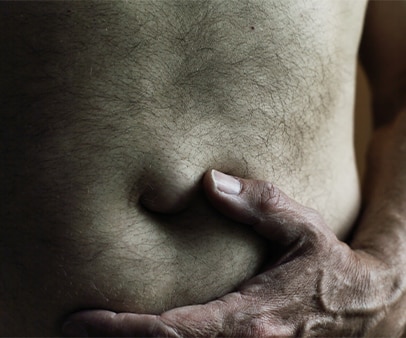Hernias tend to be more common in adults, but can also affect children and babies. While openings in the abdominal wall are normal in babies (and typically close before or right after birth), it is possible for intestines or other organs to push through and create a hernia.1
Most Common Hernias in Babies and Children
- Inguinal Hernia: Inguinal hernias, or groin hernias, are the most common hernia type in infants and children. They are 10x more frequent in boys than girls and occur in 1%-5% of children. They may present as a small bulge in the groin or extend into the scrotum or labia.1
- Umbilical Hernia: A hernia that develops where the umbilical cord was once attached to the navel, an umbilical hernia usually occurs post-birth when the muscles around the belly button do not close after the umbilical cord falls off. It is estimated that umbilical hernias affect 10%-15% of all infants, with boys and girls affected equally.2
- Epigastric Hernia: An epigastric hernia is when part of the intestines pushes through the abdominal muscles between the belly button and the chest. While many are small, cause no symptoms, and therefore don't need treatment, larger ones that do cause symptoms and won’t heal on their own will require surgery to fix them.3
- Diaphragmatic Hernia: A diaphragmatic hernia is most often a birth defect/abnormality that occurs as a fetus is forming in the mother's uterus.4 Though rare, these types of hernia can occur in adulthood due to traumatic injury.5 With diaphragmatic hernias, there is an opening in the diaphragm (the muscle that separates the chest cavity from the abdominal cavity) where organs that are normally found in the abdomen move up into the chest cavity.4
Risk Factors for Hernias in Babies and Children1,4
Factors that may increase the risk of hernia in babies or children include:
- Birthweight: Being born prematurely or underweight.
- Gender: Inguinal hernias are more common in boys; umbilical hernias affect boys and girls equally.
- Genetics: Hernias tend to be more common for those with genetic syndromes or a family history of hernia.
- Medical conditions: Undescended testicles, cystic fibrosis, a need for peritoneal dialysis or a peritoneal shunt, or abnormalities in the genitourinary system.
- Race: Umbilical hernias are more common in children of African descent.
Symptoms of Hernias in Babies and Children1
- A lump or swelling near the groin or belly button
- Pain or tenderness around the groin or lower belly
- Unexplained crying or fussiness
- A visible bulge that gets bigger during straining, crying or coughing
It’s important to note that crying does not cause hernias; however, the increased pressure in the abdomen can make a hernia more noticeable.4
Incarcerated and Strangulated Hernias1
Sometimes, part of the intestine gets stuck in the abdominal opening, a condition called incarceration. If tissue remains incarcerated for a long time, strangulation may develop and cut off blood supply to that part of the intestine. Signs of a strangulated hernia include:
- Bloating
- Fever
- Lump or bulge that is larger than before and does not regress spontaneously
- Nausea and vomiting
- Redness and tenderness around the hernia
- Sudden, severe abdominal or groin pain
Strangulated or incarcerated hernias can be a medical emergency and typically require immediate medical attention. If a child is experiencing any of the above symptoms, contact their doctor immediately.
Hernia Diagnosis and Treatment in Babies and Children
Hernias can be diagnosed by a physical examination from the child's doctor. The doctor will determine whether it is reducible and can be pushed back into the abdominal cavity and may order an abdominal X-ray or ultrasound to examine the area more closely.
Hernia repair is the one of the most common surgeries kids have.3 If surgery is required to repair the hernia, the doctor may opt for one of the following:
- Open Surgery: As the traditional surgical method, an open surgical procedure involves making an incision over the area of the hernia. The hernia bulge is returned to its correct position and a mesh is often placed to help strengthen and support the weakened area before closing up the incision.6
- Laparoscopic Surgery: A surgeon typically uses several small, key-hole sized incisions during laparoscopic surgery. Instruments, such as a camera, are then inserted through the incisions to perform the operation.6
- Robotic Surgery: Similar to laparoscopic surgery, robotic surgery uses several smaller incisions. The surgeon controls the robot to perform the operation from a console located in the operating room.6
In most cases, hernias are not cause for alarm. But they can lead to serious health complications, so it is important to speak to a child’s pediatrician right away if there are signs of a hernia.
The guidance provided in this article follows general rules that should be discussed with your doctor. This article is for informational and educational purposes only. It does not substitute for medical advice. If in doubt, always consult your doctor.
Related Articles
Join the HerniaInfo.com community! Get notified about our latest articles and updates on all things hernia as they become available.


